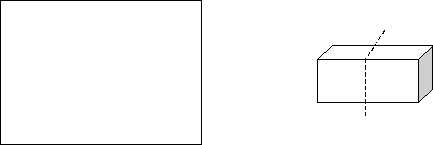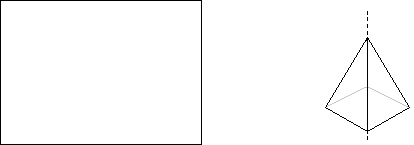Clay model cross-sections II
This task is about cross-sections of 3-dimensional objects.
| a) |
Use your modelling clay to make a rectangular prism.
|
|
| i) |
What shape will its vertical cross-section look like?
Draw this cross-section in the box below.
 |
|
| ii) |
What shape will the horizontal cross-section of the rectangular prism look like?
Draw this cross-section in the box below.
 |
|
| b) |
Use your piece of modelling clay to make a sphere. What shape will its horizontal cross-section look like?
Draw this cross-section in the box below.
|
|
 |
||
| c) |
Use your modelling clay to make a cylinder.
|
|
| i) |
What shape will its vertical cross-section look like?
Draw this cross-section in the box below.
 |
|
| ii) |
What shape will its horizontal cross-section look like?
Draw this cross-section in the box below.
 |
|
| d) |
Use your modelling clay to make a square-based pyramid.
|
|
| i) |
What shape will its vertical cross-section look like?
Draw this cross-section in the box below.
 |
|
| ii) |
What shape will its horizontal cross-section look like?
Draw this cross-section in the box below.
 |
|








